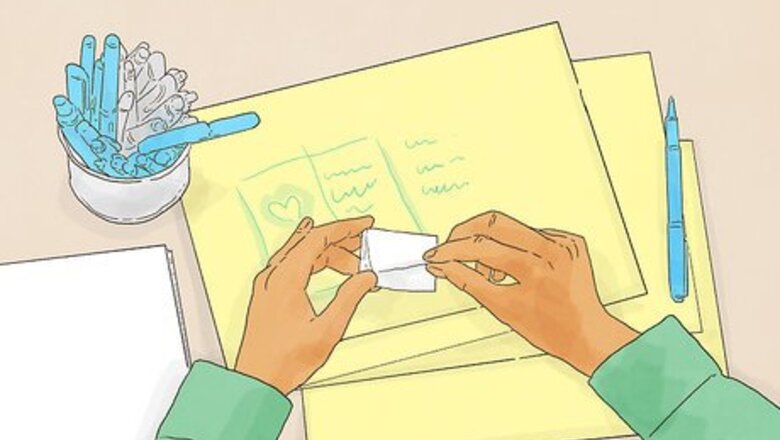
views
Recipient’s Address
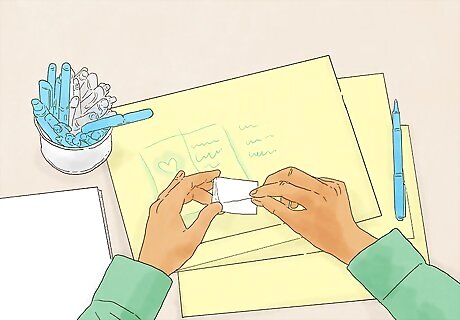
Put the envelope flap-side down. Your envelope probably has a long flap that clasps or seals the contents inside. You don’t want your address to be written on the same side as this flap.
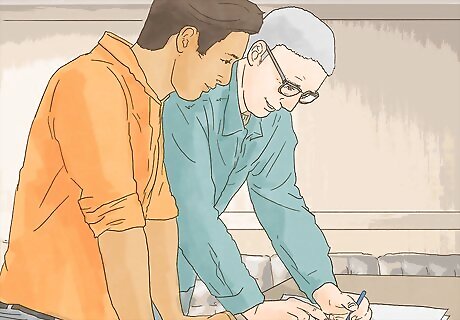
Position the address in the center of the envelope. While you don’t need to take out a ruler and find the true center of the envelope, try to be as accurate as possible. The address shouldn’t be way over to the left or right, or too close to the top or bottom of the envelope.

Start with the recipient’s legal name. Don’t use just a nickname or something like “Grandma Suzy.” Instead, clearly print the recipient’s first name followed by their last name. You don’t need to include their middle name unless they generally use it in their official correspondence instead of their first name. This first line would look something like, “Jenna Martinez.” If you’d like, you can include the recipient’s title (Mr., Mrs., Ms., Dr., etc.) before their name. It’s best to avoid writing in cursive when addressing mail. Printed block letters are easier for postal workers to read.
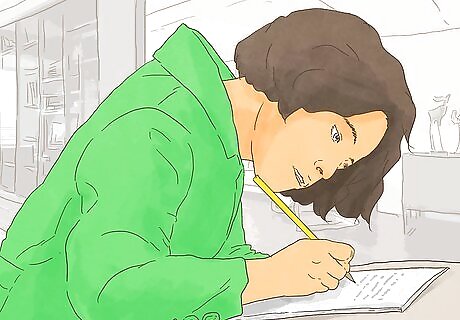
Use the following lines for a department name or institution. If you’re sending this envelope to a company, school, or other institution, print that out next. It’s best to be as specific as possible, so if you know the specific department you’re sending the letter to, include that as well. Use 2 separate lines for this information. For example, if you were sending your large envelope to the University of Oregon’s English Department, the second line would look like this, “Department of English,” and the third line would be, “University of Oregon.”

Put the recipient’s house number and street address on the next line. If you’re sending your envelope to a P.O. Box rather than a street address, put that down instead. Double check that you’re writing down the correct information. Flipping 2 numbers, for example, could easily send your large envelope to the wrong spot! For example, you might write, “125 East Main St.” or “P.O. Box 8795.” Don’t forget to add a direction if the street name includes one. You can use abbreviations (N, W, S, E, NW, etc.).

Add apartment or suite numbers on a separate line. To avoid making the line that includes the house number and street address too long, go to the next one for this extra info. It’ll make it easier for the postal worker to find it. You can abbreviate “apartment” to “apt” and “suite” to “ste.” So this line might look like, “Apt. 4D” or “Ste. 45.”
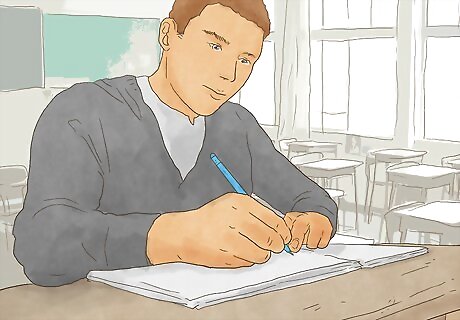
Place the city, state, and zip code on the last line. The city should come first, followed by a comma. Then, write the state’s correct abbreviation. Look up the correct abbreviation at: https://pe.usps.com/text/pub28/28apb.htm. End with the zip code. This line might look something like, “Easton, CT 06612.” It’s very important that you use the correct zip code, so double check this information online before you write it down.
Return Address
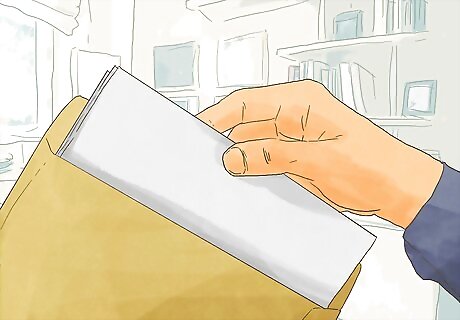
Ensure the envelope is face-up. Write the address on the side that doesn’t have a flap or a seal.
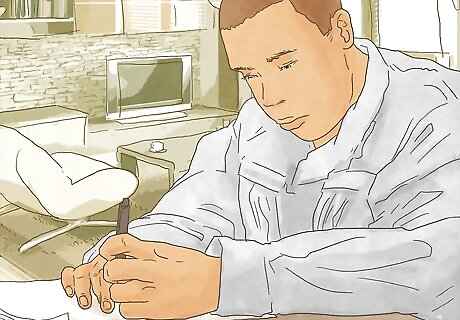
Write the return address in the top left corner. There shouldn’t be more than a sliver of space between the edge of the envelope and the return address.
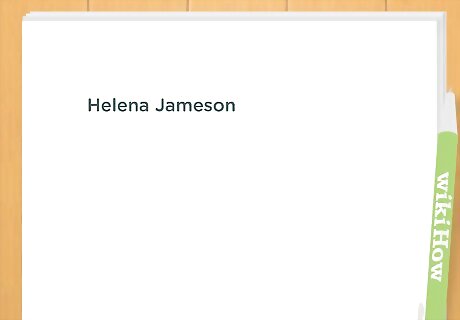
Use your full name. Start with your first name, then write out your last name. Only use a nickname or middle name if that’s what you generally use in your official correspondence. When in doubt, include both your first name and a middle or nickname. You might write, “Mr. John “Jimmy” Reynolds,” for example.
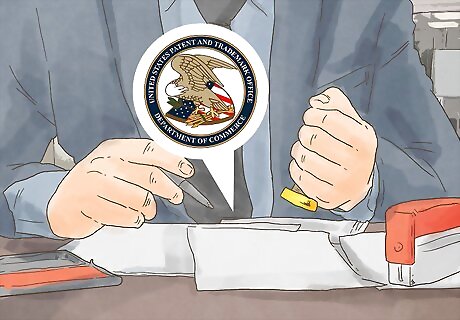
Add the name of a company or department if you need to. If you’re sending official correspondence from your institution, use the next line or 2 to communicate that to your recipient. Then they’ll know exactly what to expect when they open the envelope! So, for example, you could write, “Human Relations Dept.” on 1 line and “General Electric” on the next line.
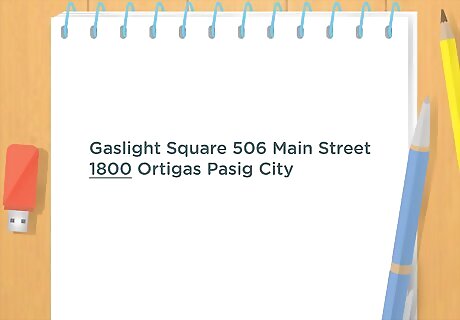
Stick the house number and street address on the next line. The house number should come first, followed by the street name. Be sure you’re using the correct information, including the direction if that’s part of the street address. Even something like putting “Drive” instead of “Rd.” could send your envelope to the wrong place. Expect a typical house number and street address to look something like, “6100 Cortaderia St. NW.” Be aware that the direction may come before or after the street name. Consult your local post office if you’re unsure where to place the direction. If you have a P.O. Box, write this down instead.

Put apartment or suite numbers on a separate line. This will keep the lines of your return address from straying too far to the center of the envelope. Use the abbreviations “apt” and “ste” to keep the address nice and trim.
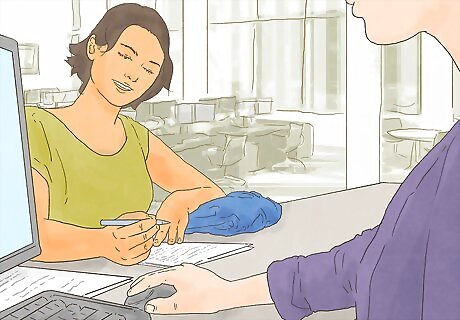
End with the city, state, and zip code. Double check the abbreviation by visiting: https://pe.usps.com/text/pub28/28apb.htm. Proofread your address once you’ve written it down to make sure you didn’t flip a number or 2 in the zip code. This last line should look something like, “Valdosta, GA 31602.” If your envelope can’t make it to the recipient for some reason, it’ll be returned to you. To ensure this happens, it’s important for your address to be accurate. Don’t rush through writing your own address just because you know it so well!
Sending the Envelope
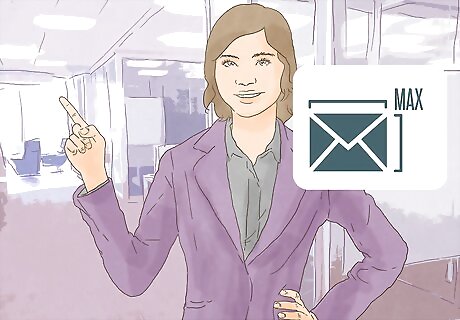
Use an envelope that’s no bigger than 12 by 15 inches (30 by 38 cm). These are the maximum length and height measurements for large envelopes. Anything larger than this qualifies as a parcel, and it’ll cost more to send.

Check that your envelope isn’t thicker than ⁄4 inch (1.9 cm). Place the item you’re sending into your envelope. Once it’s in there, use a ruler to see how thick the envelope is. If it’s too thick, the post office will define it as a parcel. Try to make sure the item is the same amount of thickness all over the envelope. A lumpy envelope with some thicker parts and some thinner parts will also be characterized as a parcel.
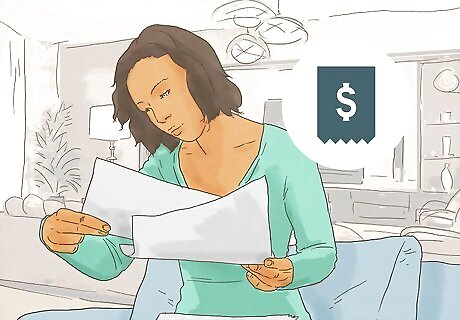
Weigh your item to see how much postage you need to pay. Go to page 37 of the United States Postal Service’s (USPS) price guide: https://pe.usps.com/cpim/ftp/manuals/dmm300/Notice123.pdf. This will tell you the amount you’ll need to pay per ounce. You can use multiple stamps to reach the total amount or visit the post office to pay by cash, check, or card. It costs $0.98 USD to send a large envelope that weighs 1 ounce (28 g). So long as your large envelope weighs less than 13 ounces (370 g), you can send it by dropping it in a blue USPS mailbox or by leaving it in your home mailbox with the red flag raised.
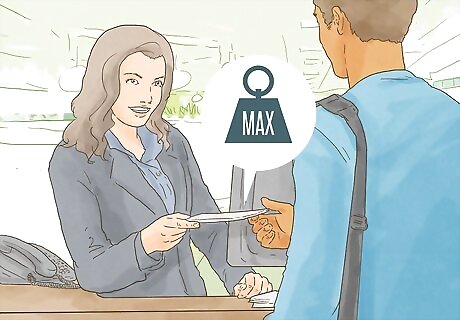
Pay a lower price if your envelope is letter-sized. If your envelope is less than 6 ⁄8 by 11 ⁄2 inches (16 by 29 cm), it counts as a letter rather than a large envelope. This means you don’t have to pay as much! Your letter can’t, however, be thicker than ⁄4 inch (0.64 cm).














Comments
0 comment